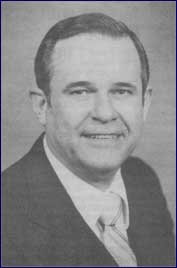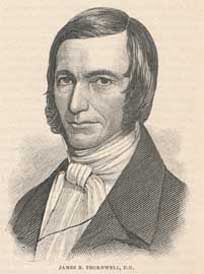Remembering Premise Magazine Online
In Periodicals on 13/08/2011 at 19:27
[Note: We seem to be running a day behind. Our software has a glitch and doesn’t post as scheduled. Our apologies for the delay.]
At my request, Dr. David W. Hall has very kindly provided a brief history of PREMISE, an exceptionally early web-based magazine which ran from 1994-1999. Some exceptional content posted under the PREMISE banner, and the PCA Historical Center has providentially been able to preserve that content. Select portions will post either on this blog or elsewhere on the Historical Center’s web site in the future. And now to Dr. Hall’s telling of the history of that effort.
The Short History of CAPO and Premise
by Dr. David W. Hall
August 13, 2011
In what seems like a land far away and in a time long ago, there once was publishing without the internet. Moreover, few reformed organizations seized that day. Thanks to a providential location for ministry and being surrounded by some very talented people, this pastor of a small church was able to participate in some of the unfolding of a new medium.
I was called to pastor the Covenant Presbyterian Church in Oak Ridge, Tennessee, in the spring of 1984. Possessing only low-tech skills and a humanities orientation, ironically I went to this historically high-tech community, filled with scientists and world-class technical researchers. I was steeped in liberal arts courses but a technical illiterate. My elders dragged me onto the information highway in its infant days, and with their support, we were able to form the first Reformed online journal, Premise, in 1994 (and continued through 1999). The Kuyper Institute started publishing its online briefings and analysis in the late summer of 1994, just prior to a sweeping congressional sea change.
Premise, however, was but one feature of the work of the larger domain: The Center for the Advancement of Paleo Orthodoxy (then www.capo.org). We chose the name to make two statements: first, we were not headed toward “neo”-anything. The content of our publishing was decidedly old school and traditionalist. In fact, anticipating our critics’ parries, our first banner logo featured a dinosaur. Our intent (and confession) was this: “Okay, yes, we’re old school. Got it. Now, what’s the rational argument after we’ve been pegged?” Second, CAPO was an online think tank, with seven different divisions. Each of those seven departments, aptly named after a great theologian or practitioner from our tradition, needed, we thought, a revival of reformed theology to renew its core. The seven different Institutes (see more below) were:
- The Calvin Institute for Theology
- The Kuyper Institute for Politics
- The Augustine Institute for Ethics
- The Van Til Institute for Apologetics
- The Newton Institute for Science
- The Groen Van Prinsterer Institute for History
- The Burke Institute for Economics
Yes, it was an ambitious vision that was never fully realized, although the fine articles which populated our e-pages were not only cutting edge for that day but also composed by a rising generation of evangelical scholars and organizational leaders. Ruling elder and friend (now Dr.) Mark Buckner was the primary poster, the brains, and the entire technical department; without him, there would have been no CAPO.
Still, Premise may have been the most widely read of our organs. That monthly magazine, first published in December 1994, featured editorials, essays, book reviews, substantive theological articles, political briefings, sermons, chapters from forthcoming works, and other writings. At the time, although we were unsuccessful, we sought to drag other fine reformed ministries and educational institutions onto the internet. However, after a few years, many ministries came to realize that the internet was neither a fad among college students nor reserved for the military.
Little could most elders predict how wide ranging and developed internet publishing would become. Those of us who ventured onto the internet a decade before the explosion of blogs were on new technical turf, despite our protestation to the contrary that in the realms of ideas there was nothing new under the sun.
This was in the day before Amazon was launched. And very few newspapers were online. I remember when Mosaic software was the first truly graphical interface and how much that advanced our online publishing. I recall a time before Microsoft had web publishing software and the time before either Mozilla or Internet Explorer. Yet, we did think the day would come when personalized news services were available and information would be interlinked. Moreover, the international access led to stunning missiological possibilities.
With gratitude to God for all his gifts, thus, I am happy to dedicate the digital version of Premise to the PCA Historical Center, both with my thanks to that organization and to its director, Mr. Wayne Sparkman.
************************
The explanations from our home page were:
CAPO is the umbrella organization, which provides funding, direction, and facilities for:
THE INSTITUTES
The Kuyper Institute for Politics is named for Dutch pastor and politician Abraham Kuyper (1837-1920). It focuses on applying biblical standards to politics, particularly House and Senate races. Regular briefings by email are available. To subscribe send an email message to:
majordomo@use.usit.net
with SUBSCRIBE CAPO-L in the body of the message.
Back issues and other studies remain posted, providing a unique timely biblical analysis of American politics. Among all the other political think tanks, The Kuyper Institute is unique in this: It alone has been created and developed to promote a distinctively Christian critique of modern politics.
The Calvin Institute for Theology, is named after John Calvin (1509-1564). It contains essays on various historical periods of theology and offers in-depth analysis and critique. Included are essays on current themes, historical essays, bibliographies, and numerous other studies, providing a unique online theological repository.
The Van Til Institute for Apologetics is our center for the reasoned defense of the historic Christian faith. Named for a ground-breaking 20th century apologist, Cornelius Van Til, this center provides some of the finest cutting edge scholarship in the world. This center serves an international community with the highest caliber of thoughtful apologetic studies and resources.
The Augustine Institute for Ethics specializes in, medical, legal, and philosophical ethical issues. Named after Augustine of Hippo (354-430), this center concentrates on applying the most solid of ethical criteria to modern issues, frequently contrasting the two philosophical oppositions observed by Augustine: The City of God or the City of Man. Current, analytic, and systematic studies are contained.
The Burke Institute for Economics seeks to apply historic Christian norms to economics. This center honors the work of Edmund Burke (1729-1797). Long under-appreciated in terms of its impact, economic theory and practice is as value-laden as anything else. This center seeks to champion a biblical approach to economics in theory and practice.
The Groen Van Prinsterer Institute for Historyfollows the method of Dutch thinker Guillaume Groen Van Prinsterer (1801-1876). Recognizing the two major philosophical explanations in modern times as either an Enlightenment humanism or a Reformation base, this center collects numerous essays on a widerange of historical subjects.
The Newton Institute for Science. Few areas need more attention than science. Isaac Newton (1642-1717) applied scripture to science; this center encourages the same by its thoughtful studies on the interface of science and Christianity.
CAPOFellows included:
Stanley Bamberg, Ph.D., Fellow
Doug Bandow, J.D., Sr. Fellow
* Michael Bauman, Ph. D., Research Fellow
* E. Calvin Beisner, M.A., Fellow
* Joel Belz, M.A., Distinguished Fellow
Mark Buckner, M.S., Ph.D., Research Fellow
* J. Ligon Duncan, III, Ph. D., Fellow
Nick Eicher, Fellow
Darwin Glassford, Ph.D., Fellow
T. David Gordon, Ph.D., Fellow
* George Grant, Ph. D., Distinguished Fellow
David Hall, M. Div., Sr. Fellow
Michael S. Horton, Ph. D., Fellow
* Frank James, Ph.D., Fellow
Doug Jones, M.A., Fellow
Reggie Kidd, Ph.D., Fellow
Peter Leithart, M.A., Fellow
* Peter Lillback, Ph.D., Research Fellow
R. Russell Miller, M.S., Research Fellow
* Marvin Olasky, Ph.D., Sr. Fellow
F. Edward Payne, M.D., Fellow
M. Dale Peacock, J.D., Fellow
Patrick S. Poole, Fellow
Tim Rake, M.Div., Fellow
W. Duncan Rankin, Ph. D., Fellow
R. C. Sproul, Jr., M. A. Fellow
Hilton Terrell, M. D., Ph. D., Fellow
Timothy Terrell, M. A., Fellow
2011 Note: those marked by an asterism (*) went on to lead major reformed or evangelical organizations.
Our motto was: Looking for Wisdom as Ancient as the Scriptures.”Since June of 1994.
And our front page introduced our work as follows:
The Center for the Advancement of Paleo Orthodoxy
An Innovative
. . . high-tech
. . . Electronic
. . . Analytic
. . . On-line Archive and
. . . Publishing Forum
. . . With Serious and
. . . Distinctively biblical perspectives.
Mailing Address and Offices
190 Manhattan Ave.
Oak Ridge, TN 37830
Phone: (423) 482-7549
Fax: (423) 483-5581
Our Story:
In early 1994 an insightful Board conceived, funded, prepared, and launched the first evangelical think tank on the World Wide Web, a service that is . . .
- as large as the world;
- comprehensive enough to provide a worldview;
- unsurpassed in terms of evangelical online scholarship and analysis;
- consistently reflective of the ancient (paleo) biblical faith.
In terms of human thought, we agree with Solomon: Nihil novum sub sole (“There is nothing new under the sun.”)
With a consortium of 7 distinct think tanks, a monthly award-winning journal, numerous electronic publishings, and a publishing arm, and an online bookstore [2011 Note: This was pre-Amazon.com but we did not have the business savvy to develop this], this center combined the best of modern technology with proven truth.
The Center for the Advancement of Paleo Orthodoxy is a distinctively biblical and historic consortium of networked think tanks, publications, and scholars. The purpose of the Center, located in Oak Ridge TN, is to shed ancient biblical light on modern issues. Admidst the demise of modernity and postmodernism, CAPO is unconvinced that all earlier thinkers should automatically be excluded from modern discussions, as if moderns are inherently and categorically superior. CAPO reaches thousands of international readers per month and has won the following awards . . .





![James Alexander Bryan [20 March 1863 - 28 January 1941]](https://thisday.pcahistory.org/wp-content/uploads/2013/03/bryanJamesA.jpg)